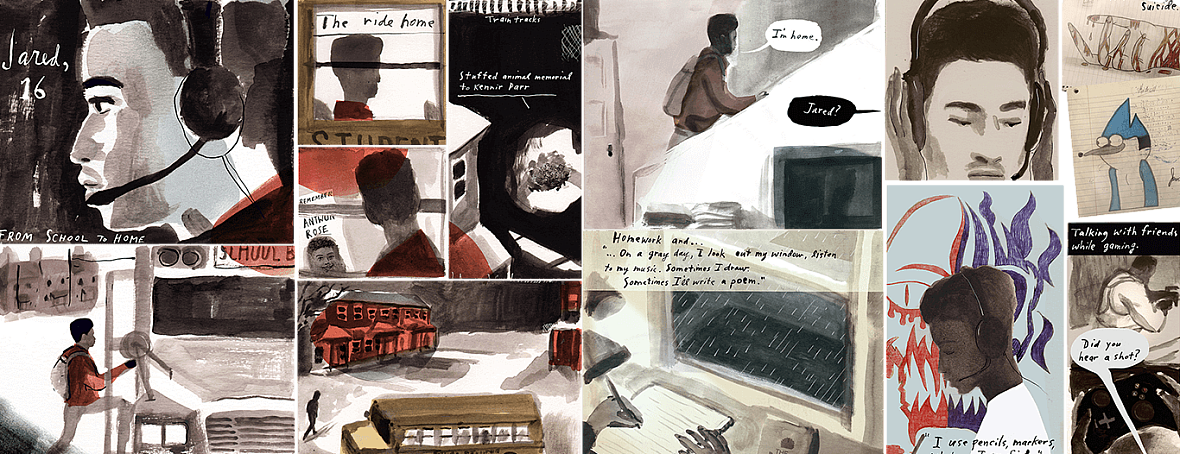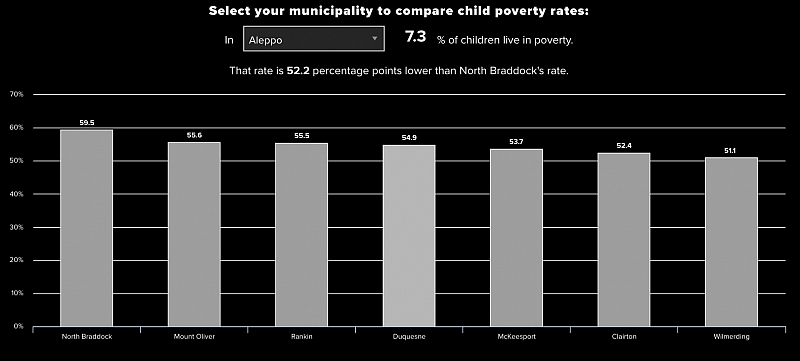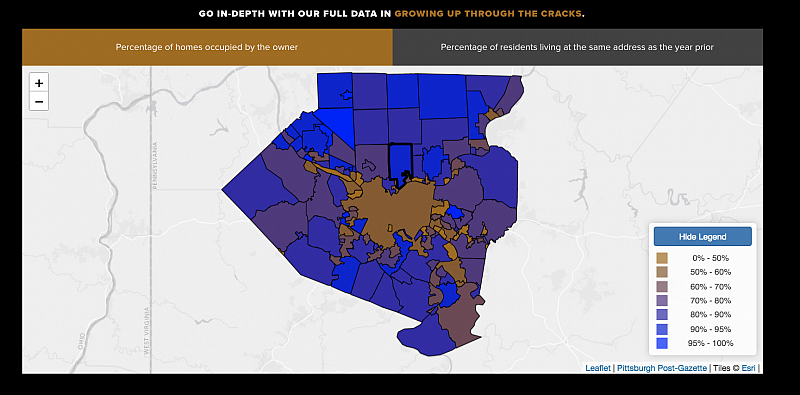Growing Up Through the Cracks: Mapping Inequality in Allegheny County
This story was produced as part of a larger project led by Rich Lord, a participant in the USC Center for Health Journalism's 2018 Data Fellowship.
Other stories in this series include:
Charges lodged in North Braddock arrest
Growing up through the cracks: The children at the center of North Braddock's storm
Growing up through the cracks: Policing change brings cops up close with kids in poverty
Current and former Rankin residents remember the past, envision the future
Pittsburgh's neighborhood boosters face changing landscape
Where fighting poverty is a priority
Rankin, Pennsylvania: Fighting 'the depressed mindset'
A mother moves from McKeesport to Glassport to try to better her family’s chances
Growing up through the cracks: North Braddock: Treasures Amid Ruins

Children surrounded by poverty face narrowed futures and, often, shortened lives. In southwestern Pennsylvania's fragmented patchwork of cities, boroughs and townships, they're also likely to live in places without the resources to provide safety, recreation and a healthy environment.
The Pittsburgh Post-Gazette, today and throughout this year, will explore the data tying childhood deprivation to a host of other problems, and delve into a dozen communities in which half of the kids live in poverty. Reporters and photographers will visit with families doing their best in difficult surroundings, explore the causes and effects, and search for solutions.
Top vs. Bottom
If your family lives in White Oak or Churchill, you can pretty much guarantee that the neighbor kids aren't living in poverty, according to estimates the Census Bureau released in late 2017. In seven Allegheny County municipalities, though, you can bet they are. See how your community compares to North Braddock, where around three in five children live in poverty. Or for a close-up of one community in which half of the kids are in poverty, read Rankin: Fighting 'the depressed mindset.'

Mapping Inequality
Communities with high child poverty tend to have lower home ownership rates and higher turnover than their more affluent neighbors. In Wilmerding, for example, just three in 10 residents own their homes, and three in 10 lived somewhere else the year before, according to the Census Bureau. That means many kids are subjected to a sense of neighborhood instability at best, and personal dislocation at worst.

[This story was originally published by the Pittsburgh Post-Gazette.]

